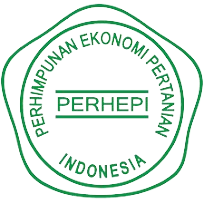Factors That Affected Labor Productivity on Production Department at PR Gagak Hitam Pakuniran Bondowoso Regency
DOI:
10.25047/jmaa.v3i2.81Downloads
Abstract
The company should always strive to maintain and improve the labor productivity to maintain and achieve the goal that has been achieved so that the company can continue to operate effectively and efficiently with existing resources and produce products as expected. Increasing productivity is necessary because without a high labor productivity it is difficult for companies to achieve the set target. The aim of this study was to (1) Determine and analyze the influence of work environment, job stress, skills, motivation to work productivity of employees Cigarette Production section simultaneously at PR Gagak Black Pakuniran Maesan . (2) To know and analyze the influence of work environment, job stress, skills, motivation to employees productivity partially Cigarette Production section at PR Gagak Black Pakuniran Maesan. (3) To determine and analyze the variables which had dominant influence to the employees productivity on cigarette production section at PR Gagak Black Pakuniran Maesan. The research took 3 (three) months, which was located at PR Gagak Black Pakuniran Maesan . The method that used in the final assignment was survey research by using questionnaires (questionnaire) as a tool for collecting data. The results of this study showed that Work Environment (X1) Work Stress (X2) Skills (X3) Motivation (X4) simultaneously had a significant effect on labor productivity, and Work Stress (X2) Skills (X3) does not have a significant effect on labor productivity. Work Environment (X1) Motivation (X4) partially has a significant effect on labor productivity.
Keywords:
Human resources Work Environment Job Stress Skills Motivation ProductivityReferences
[1] M. S. Panggabean, Human Resource Management. Jakarta: Gahli Indonesia, 2002.
[2] A. Prabu, Management Human Resources. Bandung: Teenagers Rosdakarya, 2008.
[3] H. Umar, Human Resources Research in Organizations. Jakarta: Gramedia Pustaka Utama, 2008.
[4] Sugiono, Research Study Administration. Yogyakarta: Alphabetta, 2000.
[5] A. Supangat, Statistics In Descriptive , Inferential , and Nonparametric Studies. Jakarta: Kencana, 2008.
[6] Sudjana, Method Statistics. Bandung: Tarsito, 2002.
[7] Supranto, Statistics Theory and Applications. Jakarta: Erlangga, 2002.
[8] H. Sutrisno, Research Methodology (Volume-3), Volume 3. Yogyakarta: Andi Offset.
[9] N. Hadari, Human Resource Management. Yogyakarta: Gadjah Mada University Press, 1996.
[10] D. Retnaningtyas, “The Relationship Between Work Stress and Work Productivity in the Cigarette Rolling Department of PT Gentong Gotri Semarang,” Semarang State University, 2005.
[11] P. Ariestonandri, No TitleMarketing Research for Beginner: Panduan Praktis Riset Pemasaran Bagi Pemula. Yogyakarta: Andi Offset, 2006.
License
Copyright (c) 2023 Siti Jamilatul Laylia, Wenny Dhamayanthi, Ratih Puspitorini

This work is licensed under a Creative Commons Attribution 4.0 International License.
You are free to:
- Share — copy and redistribute the material in any medium or format for any purpose, even commercially.
- Adapt — remix, transform, and build upon the material for any purpose, even commercially.
The licensor cannot revoke these freedoms as long as you follow the license terms.
Under the following terms:
- Attribution — You must give appropriate credit, provide a link to the license, and indicate if changes were made. You may do so in any reasonable manner, but not in any way that suggests the licensor endorses you or your use.
- No additional restrictions — You may not apply legal terms or technological measures that legally restrict others from doing anything the license permits.
Notices:
You do not have to comply with the license for elements of the material in the public domain or where your use is permitted by an applicable exception or limitation.
No warranties are given. The license may not give you all of the permissions necessary for your intended use. For example, other rights such as publicity, privacy, or moral rights may limit how you use the material.






